
This is a recorded session from the 2024 AAM Annual Meeting & MuseumExpo. The session will tell the story of the “rematriation” of the Sacred Red Rock and the positive effect this effort has had on its stakeholders and surrounding communities.
Additional resources:
Rematriation of the In‘zhúje‘waxóbe/Sacred Red Rock slides
Transcript
Thomas Owen: Well, good morning, everyone. Thank you for making an early meeting after what was probably a late night for some of you. We appreciate you being here. My name is Tom Owen.
I’m a vice president with PGAV Destinations where a planning and design firm for museums and all kinds of cultural sites and we had the privilege of being part of this story that you’re about to hear.
Great stories have a moral, a lesson to pass on and the story of the sacred red rock includes fascinating details specific to one area of Kansas but the truth it speaks is universal and indicative to the treatment of indigenous people who occupied this land, we now call the United States. We learn from great stories. Just by looking over my shoulder, you will see– you’ll begin to understand the term rematriation, which some of you may not be familiar with. Great stories often include a journey. And the Sacred Red Rock began its journey about 700 ,000 ago. It’s a far away from Kansas.
The Sacred Red Rock is a glacial erratic and it’s traveled a long way and what you’re going to hear about today is the continuation of that journey that this rock has taken.
So now I have the privilege of introducing my longtime friend and colleague James Pepper Henry as a long a distinguished career as a museum professional including the Smithsonian Museum of the American Indian, Herd Museum, Gilchrist Museum, and the First Americans Museum in Oklahoma City where he is CEO emeritus. Jim served on the board of AAM and has been a mentor to numerous museum professionals. His leadership in the rematriation of the Sacred Red Rock is a personal mission. JPH is vice chair of the Kaw Nation. If he is willing, He may teach you how to say the name of the sacred red rock in the call language.
So, Jim.
James Pepper Henry: As Tom said, I’m a member of the con nation and Caught short for Kansas or Kansas, and so the state of Kansas is named After my people And if you walk down the streets of Lawrence or Topeka and you asked a citizen of Kansas where does the state get our name, I’d say 99 % of the people wouldn’t know. And that’s how invisible my people are in the place that we come from. And I want to talk a little bit today or we’re talking today about the appropriation of grid objects and items to indigenous tribes and also the ethnic cleansing of indigenous peoples from certain areas around the United States and today in particular I want to talk about the return or the rematriation of, get ready, in In‘zhúje‘waxóbe. Now can everybody say that? In In‘zhúje‘waxóbe. Well I got the entire City Council of Lawrence to say this now in In‘zhúje‘waxóbe which is great but that’s our Kaw language and in In‘zhúje‘waxóbe literally means the red rock that is close to God and that’s the translate translation in the call language but it’s gone by many names over the years it was known to settlers very well known to settlers in the area as the Ka prayer rock. The rock or the stone was located at the confluence of two watersheds, the Kansas River and Shunganunga Creek, between Lawrence and Topeka. And the rock is, it’s about 15 feet tall and weighs about 26 tons. So, it’s, it would have stood out on the prairie because of its red color. And as Tom said, it was a glacial erratic, it probably came from Minnesota area originally, but was deposited 10 ,000 years ago in what is now Kansas, and that rock would have stood out on the green of the prairie. And it was a gathering place for not only the Kaw people, but for other tribes in the area.
And we didn’t pray to the rock, but the rock was more like our church, or an altar. We would gather, and the rock had the qualities of the creator, it was strong, it was resilient, it was imposing and so we had at least 39 songs that that were associated with our sacred rock and so we, we had a relationship with that rock for centuries but as Settlers started encroaching in onto our territory and I think here is a broader picture of our territory.
So, the Kaw Nation originally had a reservation of 22 million acres, which encompassed two -thirds of the state of Kansas, the lower part in Nebraska, part of Missouri, and the eastern part of Colorado. But as settlers came in, our territory kept shrinking, and eventually we were moved to a 40 square mile reservation near Council Grove, Kansas and then eventually moved into Indian Territory in Oklahoma in 1873. So, from 1815, we had 22 million acres. By 1915, when we removed Oklahoma and with the Allotment Act, we had a five -acre cemetery. So, within a hundred years we lost almost all of our land.
When the Spanish first arrived in this territory, in the 18th century, our numbers were recorded at over 20 ,000. By the time Lewis and Clark came through Kansas in 1804, our numbers had shrunk to about 10 ,000. By 1915, there were only Kaw people left on this planet. And I’m a descendant of that last 187 people.
And so not only did our territory shrink to almost nothing, we almost disappeared as a group of people. And I’ve made it my life’s goal for my people to start reclaiming the things that are important to us, our land, our sacred objects, and our language. We almost lost our language too, and that’s another session for another time, but we’ve been rebuilding our language again. But one of the things that was most sacred to us was this rock.
And when they moved us out of the Lawrence and Topeka area to our smaller reservation in Council Grove, Kansas, the settlers appropriated our sacred stone. They knew how important it was to us, but the citizens of Lawrence, Kansas, took the stone from its original location at the confluence of these two rivers and moved it next to City Hall in Lawrence into a little park and put a plaque on the stone and dedicated it to the hardship of the pioneers.
And I’m not going to read this, but so this was, again, not only erasing us as human beings from the landscape but erasing the memory of us by appropriating the things that were sacred to us.
This is a prayer chart that was created in the early 1800s. You can see at the very top row, there in the middle, you see that dark object. That’s our sacred rock. The sacred rock was part of our prayer charts, And again, anthropologists and settlers would have been very familiar with the rock, too, as well as our people.
So, in 1929, this stone was dedicated to the settlers of Lawrence, and you can see these are the descendants of the settlers placing the plaque on In‘zhúje‘waxóbe. So again, you know, defacing our sacred object and dedicating this to the white settlers that came into that area.
So, our last reservation was in Council Grove, Kansas, this 40 square mile reservation. And we were removed from that area in 1873. So, the tribe, back in the early 2000s, started to purchase the land of our old reservation. And There are other monuments and other remnants of our villages on that land. And every year in Council Grove, Kansas, small little town and kind of in the middle of Kansas, they have a parade on Main Street and it’s a celebration called Wachunga Days. Wachunga was one of our Kaw chiefs, and so the city every year gets together and they invite the tribe to come back to Council Grove,
our last reservation, and they have a parade on Main Street, and the tribal chairperson waves to everybody as the princess wave down Main Street, and we have a little celebration, and they put all the tribal members that they’re on a little hay wagon, and we go through the middle of town, and everybody’s happy, and then we leave. We’re there for two days, and we’re gone. But as soon as we started to think about coming back to that area and purchasing land that used to be our reservation, then that racism started coming up through the community.
Before we were removed to Kansas, in the paper, we were described as dirty, filthy people because we were starving. The government had promised us commodities that never came through, and so a lot of our people were starving and begging for food, and so they called us dirty, filthy people before we left. So, when we came back to purchase the land in Kansas, people started saying the same things again. These dirty Indians are gonna come, they’re gonna bring drugs, they’re gonna bring crime. And my reaction is to it, I said, you already have the market cornered on meth labs here in this part of Kansas. I don’t think we can contribute any more to that so that racism kind of came back up through you know through the ether there and so we you know the city is the area has calmed down a little bit now because of that but we’ve created a tribal park now on our former reservation land as a way to educate citizens of Kansas is who we are as Kaw people and that we’re the original ab inhabitants of that land and it’s about 60 acres and you’re gonna hear a little bit more about the development of the park but there’s an old railway that comes through the park that they converted to trail system so that goes right you can ride I know several hundred miles on this rails to trail system that goes right through our heritage park so we’re trying to increase our presence again in Kansas and educate people about who we are.
And just a few years ago we built the state built a dance Arbor for us at our old reservation site on at our tribal parks so every year we gather and we have our dances there now. But I want to play a little video for you that and we have Ben Arradondo here who is one of the producers of a documentary that’s being created and we’ll hear a little bit more about that but I want to show you a little a little clip of a documentary that’s being created about the return of our sacred rock to our and you get a little bit more information.
Video: In In‘zhúje‘waxóbe. In Jujie Wachobe. In Jujie Wachobe. In Jujie Wachobe. In is a stone. Jujie is our color red. And Wachobe is That’s one of those words that has like a lot of meaning into it. The rock, it was our medicine, it was our protection. Wachobe, sacred.
The story goes that in 1929, in the dark of the night, Lawrence got the railroad to help them and they took In‘zhúje‘waxóbe out of the river and put him in a little park, Robinson Park in downtown Lawrence. They had appropriated the stone and dedicated it to themselves. With the plaque honoring the founders of Lawrence was another part of erasing the concept people from their memory.
They not only have cleansed us from the land, they’ve taken the things that are most important to us, most sacred to us, and they’re trying to erase that as well. That’s a way for them to erase their guilt for what they’ve done.
And I made a vow that someday the stone in Jujie would come back to the core people. The Konze Nikujinga are the original inhabitants of this land called Kansas, and it was our home for centuries. It is our wish in the 21st century to strengthen our ties to our homeland and we must exercise our sovereignty as a distinct indigenous nation to reclaim and assert our right to the tangible and intangible things that make us who we are.
We have been separated from our grandfather for more than 150 years and we look forward to being reacquainted. In the spirit of reconciliation and deep respect for the people of the Kaw Nation, the City and County agree to work with the Cognition to cooperate fully in the return of In‘zhúje‘waxóbe from the City to Cognition and to insist as much as necessary in the relocation of Injujewa Hubei from the City of Lawrence to Aleguejo Heritage Memorial Park in Council Grove, Kansas.
The people of the Kanda, the people of the wind, the south wind, the beautiful site. Thank you for joining us here tonight.
If we don’t have our history and we don’t have our culture and our cultural life ways and we don’t have our language, then we cease to exist as Kaw people. We know that it’s going to come back to our people, and we will never let that happen again. We’ve lost everything at one time and we’re able to rebuild and come back and be this strong today. We are a strong people and we have survived. I think right now the time we’re in is a time of increased awareness for Native people. It’s very heartwarming to see.
I have had my hat on as a city attorney, but, you know, I’m an indigenous woman. I’ve been proud of our elected officials who have stood up and said, you know, our community made a mistake, and we want to try to make it right. We’re getting the Jujube back that’s only going to make us stronger. The ones watching over us and seeing that we’re doing a good job. There’s going to be growth and there’s going to be blessings from that. The return of In‘zhúje‘waxóbe means a few things. One, it means that we’re reclaiming the things that are sacred to us.
We’re reclaiming our heritage, but it also means that we have greater responsibility now. But I think that stone in return will care for us if we have that relationship with the stone.
Thomas Owen: So now I get to introduce Sydney Purcell. She’s the first curator for public practice at the Spencer Art Museum, where she initiates ways to involve community and incorporate feedback in exhibitions and programs.
Her interests include community -based, activist, and socially engaged art, indigenous art, culture, identity, and representation, disability art, accessibility, and multi -sensory learning. And Sydney serves on the Native Faculty and Staff Council, Pow Wow, and Indigenous Cultures Festival Committee and Indigenous Arts Initiative. She received her MFA in Expanded Media from the University of Kansas and her BFA in Painting from the University of Missouri. Purcell is a citizen of the Iowa Tribe of Kansas and Nebraska. Sidney?
[Applause]
Sydney Brooke Pursel: Aha, Hanway P. Hello and good day. I’m or so, and I am a member of the Iowa tribe of Kansas and Nebraska, which actually, I have an affinity towards Kaw Nation because our languages are very similar.
We both say hello the exact same way, hallway P, and my current tribes reservation is on Kaw Original Territory. So, I’m gonna be telling you a little bit about some communities coming together to make this project possible.
And while many residents of Lawrence, Kansas, including myself, did not know about or pay attention to In‘zhúje‘waxóbe before this project really started moving forward, the Kaw people never forgot that In‘zhúje‘waxóbe was sacred and significant to them. So this is an article of my mentor, Jim Pepper Henry, from the ’90s talking about how he was seeking the sacred red rock back to Kaw Nation. But the project really received renewed interest after local community artist Dave Lohenstein started a poster project through the People’s History Project Initiative about In‘zhúje‘waxóbe and he reached out to this woman, Pauline Eads -Sharp. She is a Kaw Nation member, and she’s seen here doing a performance of Chief Lucy. Chief Lucy is her great -grandmother and was the first female Chief of Kaw Nation, and was the Chief of Kaw Nation when IIn‘zhúje‘waxóbe was taken from the confluence of the rivers.
So, the In between Dave Lowenstein and Pauline, they ended up receiving a small grant and they called the project at that time between the rock and a hard place. I think this was about 2017 or 2018. And the first part of that project funded the first iteration of the signs in Robinson Park that asked the community, “Should this Park be named after Charles Robinson.
Robinson was Kansas’ first governor. He was also a superintendent at Haskell Indian Nations University. They also did a series of community engagement through that grant where they educated the citizens of Lawrence about the sacred red rock and his history.
And they became more involved with Kaw Nation, which led to Kaw Nation officially requesting the return of In‘zhúje‘waxóbe in 2020. This is the letter that they sent, one of the newspaper articles. The city of Lawrence unanimously voted to return In‘zhúje‘waxóbe and support this project. In any way that they could, they also offered an official apology by the City of Lawrence to Kaw Nation. And following that, a collaboration between Kaw Nation, the City of Lawrence, and the University of Kansas resulted in a $5 million Mellon Foundation grant “Return in In‘zhúje‘waxóbe to Alegawaahu Memorial Heritage Park outside of Council Grove, Kansas.” And this Mellon Foundation funding was really sparked by the aftermath of the murder of George Floyd and all the Confederate monuments and people rethinking memorials and monuments here in the United States. So that was kind of the catalyst, which really made this project move forward, as we already saw Jim Pepper Henry was wanting to do this in the 90s, and nothing had happened until recently, until now.
So, the $5 million Mellon Foundation grant covers the documentary, the trailer, which you just saw. These are five Kaw Nation members that were on a float trip to see the place where In‘zhúje‘waxóbe was taken from the river. So, three of them you saw speaking in the documentary and the other two to the left are part of the documentary film team.
It also covers community engagement and education. And this is Jay Johnson, who is the lead on the University of Kansas side. I’m also representing the University of Kansas and the Spencer Museum of Art in this project. As the curator for public practice, community engagement is one of the things that I do. And Jay Johnson is seen here with a group of hers. This is the Haskell Environmental Research Studies internship program, so he was talking to them about the project. Last summer, during June, we did weekly community engagement meetings at the park before In‘zhúje‘waxóbe moved.
These were informational sessions, storytelling sessions. We met with members of local neighborhood associations, faith communities, locals that were interested in the project, historians that were interested. And we all met just to talk about their first experiences with In‘zhúje‘waxóbe.
Activity guide was created. So, this has been used with a lot of elementary and middle school student groups that come to the park to learn. But it’s for everyone. So, adults could fill out the activity guide as well. And it encouraged you to stop, look, listen, draw photos, draw pictures in the activity guide, think about the name of the park and what we could maybe change it to in the future.
And the top left, we also brought a group of drawing students from Haskell Indian Nations University to document. The top right is one of their ledger drawings. We invited non -indigenous artists to participate in other sessions as well, just kind of documenting In‘zhúje‘waxóbe before he was moved. And this is probably one of the most exciting days for me, which was when the plaque actually came off of In‘zhúje‘waxóbe, and it came off within like two or three minutes. We thought it was going to be a much more difficult process. So It was a very exciting day, and then, of course, the deconstruction of In‘zhúje‘waxóbe‘s monument started shortly after that.
The plaque, everything– so in In‘zhúje‘waxóbe, there’s actually two plaques. There’s the larger one that has the list of all the founders of Lawrence. And then there’s a smaller one that’s dedicated to Robinson as well that was attached to In‘zhúje‘waxóbe.
So, the 26 ton stone, the base that includes all of these small red quartzite boulders and both of the plaques are belong to Kaw Nation and were transferred over by the city of Lawrence.
But it was determined by Kaw Nation that the plaque doesn’t really need to In‘zhúje‘waxóbe Alek O ‘ahu, Memorial Heritage Park. There were a lot of discussions about different things we could do with it, melt it down, turn it into souvenirs. But some of the descendants of those founders were not okay with that. So, it was actually signed over on a five year loan to Watkins Museum, which is the Douglas County Heritage Museum in Lawrence, Kansas, and this is the director and the chair of Connation signing the paperwork for that the morning of our return of the rock event in Lawrence, Kansas last summer in August. So, it will be incorporated into an exhibition in the museum about the indigenous peoples of the area which the museum has not talked about in much detail previously.
So, it’s really exciting that they’re going to be talking not just about the history of that place from the founding of Kansas, but prior to that as well.
And this is the event that was held in Lawrence in August. There were about 400 people in attendance to witness the official celebration of the return.
One of those people was Governor Kelly and at this event the apology was read in full by the mayor of Lawrence as well. And we concluded the event with dancing and drumming And we invited members of the community to participate in a round dance as well, so we could all celebrate together.
The following day, In‘zhúje‘waxóbe was actually loaded onto the trucks and taken to a storage facility outside of Council Grove. The PGAV needed to see the base of In‘zhúje‘waxóbe before they could build the new site for him in Alagahu Park.
So it was moved to a temporary storage until just a couple months ago when the new base, the new concrete was laid and this happened in March and In‘zhúje‘waxóbe moved out of storage and has now been placed into the park.
The plaques are now installed at Watkins Museum. The rest of the exhibition is not yet ready, so that is going to come out probably sometime next year with all of the interpretation and other indigenous histories of the area.
Some of our community engagement team is working with local artists to do rubbings of this plaque to see their interpretations through art as well. One thing I didn’t mention is that part of the Mellon Foundation Grant will also fund a book project as well.
But most of the money is being used to actually physically move in In‘zhúje‘waxóbe and on the constructions that you’ll hear about in just a second and all of the infrastructure that’s needed in the park.
So the new, what we’re working on now in Lawrence, Kansas is community engagement to determine what to do with what is now known as Robinson Park after In‘zhúje‘waxóbe now gone.
So, this is a group of people that met just a few weeks ago to discuss future plans for that Park. One of the last parts of the Malin Foundation funding is a proposal to the city of what we’ve heard from the community that could happen in this place or names that we could change Robinson Park to.
So, this is we did a little drawing exercise after we did a walking exercise around the park And some of the things we’ve heard a lot is we want to make sure that call presence is still felt in Lawrence and in this place. Just because In‘zhúje‘waxóbe gone, we don’t want to erase that history either. So, we definitely want to make sure we’re still honoring the call people in this place. One of the things we hear from the community most often is land back, which I agree, but this is a very tiny park. I’m not sure what Kaw Nation could possibly do with it. Jim Pepper Henry talks about building the world’s tallest casino in that spot, which I think would be hilarious, right across from City Hall, but it’s unclear if colonization actually wants that. So, we’ll start those conversations as well, but at the very least, the name of Robinson should be changed to something that reflects the Caw people, so that we can remember that history. And the next group of people that will be community stakeholders in this project is the city of Council Grove, because of the new place that In‘zhúje‘waxóbe is now living. So, I’ll pass it over.
Thomas Owen: So, our next speaker will be my colleague, Diane Lockner. She’s a vice president with PJV Destinations. Diane led our planning and design effort for the site development that you’ll hear about. And Diane has a personal connection because she, Diane is an architect, and she did her architectural training at the University of Kansas in Lawrence. So, she is of the community as well and so I think this got to be a personal passion for her too so Diane.
Diane Lochner: Yes, as Tom said you know five years in Lawrence looking at this this red rock in Robinson Park which was in downtown Lawrence I had no idea I had no idea and now it’s been so wonderful to be a part of this significant rematriation of Diane Lochner. So the wonderful part about Alegawaho Memorial Park is that it has a couple of beautiful structures there already. As you saw earlier, we had some beautiful pictures of — sorry, let me go back. The dance arbor, where Jim and people were celebrating. So this beautiful structure was there.
We also have the Kaw Klans Circle on site. And so we’re dealing with some significant elements already at the park, and really wanted to consider the key placement of IIn‘zhúje‘waxóbeon the site and give it its reverence that was necessary and needed. There was also a beautiful monument to the unknown Kansa warrior up on top of the hill.
And it was really only until we came to the site as a group and really walked the site multiple times to determine the placement of, of IIn‘zhúje‘waxóberelative to these other significant elements on the site. While not, not really a massive build out of any site, these particular elements all needed to stand strong on the site.
And so, we had lots of conversations. Tom and team went out early in the process and then we followed again with another site visit, I think in the middle of a snowstorm, if I remember correctly, of course, in Kansas. And it was wonderful, Again, to really just take the time to walk the site. I mean, many of us deal with building plans and site plans, but there was nothing more important for us to take the time with the group in planning and really understand where this, the placement of IIn‘zhúje‘waxóbeneeded to be on the site to give it its, again, to give it its strength and its proud presentation. We also, you know, had to think a little bit about making sure people realized the importance of Aligawajo Park and also this transformation of the park to receive in IIⁿ‘zhúje‘waxóbe.
And so working through the interpretive elements that were necessary both from a wayfinding piece, but also from, you know, a welcome center, both for the celebrations and the dance arbor,
but also for the public to come and really begin to understand the stories of the Kaw Nation, understand the story of IIⁿ‘zhúje‘waxóbe, and really understand some of the interpretation that has to happen on this particular site.
Certainly, the connection to the Kansas River and the area around this location. And so finally, after some discussion, we found the location that was important. And I remember being on site with Tom and with Jim and Jim standing in the field and saying, this this is where in IIⁿ‘zhúje‘waxóbe, what home needs to be and it was in this location that that gave its moment but also allowed the memorial the monument to the to the Kaw warrior to still be Seen and be give its importance So with this video what we really tried to do is we’ve we tried to use our visualization skills to make sure we were communicating to everybody how IIn‘zhúje‘waxóbewould sit on the site relative to the monument and relative to the landscape around it. We also have used some of the paving patterns again to represent the significance of the river and IIn‘zhúje‘waxóbeleaving the river and coming back to this place.
James Pepper Henry: We had a lot of debate about what to do within our grandfather in IIⁿ‘zhúje‘waxóbe. IIn‘zhúje‘waxóbehad been in Robinson Park for nearly a hundred years. We talked about once the stone came back into our possession, we talked about returning it back to the river to where it came from, but the problem is a lot of that area has been developed, it was private land, and we wouldn’t have access to the stone if we took it back to the original location. We talked about leaving it in Robinson Park and then reinterpreting the stone in the park.
We even talked about bringing the stone back to our people in Oklahoma, to our tribal lands in Oklahoma, and that certainly was an option that we debated over and over, but we made the decision that we didn’t want to go to Oklahoma. It wasn’t our choice to be removed from our homelands. Why should we take our grandfather away from his homeland?
So, the best solution for us was to move our grandfather in IIn‘zhúje‘waxóbefrom Lawrence, Kansas, to our tribal lands that we controlled in Council Grove, Kansas. And we talked, and then even there at Council Grove, we had some tough decisions to make. Where do we place the stone in the park?
Do we want to place it away where people can’t really interact with it just to protect it? There is a water shed there. We talked about placing it closer to the water because it came from the river originally, but that area had a tendency to flood every other year or so. So that wasn’t a really great option.
So, we decided rather than to try to make it inaccessible to protect it, that we would place it in a place of prominence so that our elders could have access to it. But also really our goal, and we’ll talk about this summer with the City of Council Grove, that not only are we the stewards, the Kaw Nation are the stewards of the stone, we want the community to be stewards of the stone too, that the stone is really for everyone. And that we all have a responsibility to care for the stone in its new home.
And so on June 22nd of this year, during that Washunga Day celebration that the city has every year, we’re going to have a dedication ceremony for the stone, inviting the community to participate. And so, in Jujube we’ll be hopefully for the next millennia that the stone will be comfortable in its new home.
But as I said in that video, we have a greater responsibility now to the stone and as a Kaw people to manage and care for the things that are sacred to us and take care of those. But I think this is a great way to educate the broader public about who we are as people and the things that are important to us. So, I haven’t been up to Council Grove in a while, but they’ve made a lot of progress on the site development. So, I’m looking forward to going up there in the next week or so to take a look. But anyway, if you’re in Kansas on June 22nd, you’re all invited to our dedication ceremony for IIⁿ‘zhúje‘waxóbe. Thank you. Yes, thank you to our panelists too.
This recording is generously supported by The Wallace Foundation.


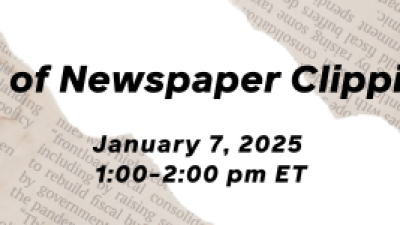
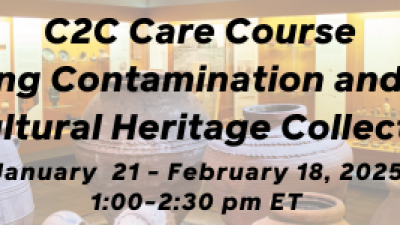

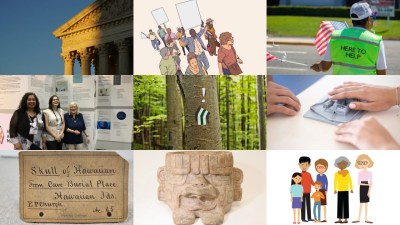
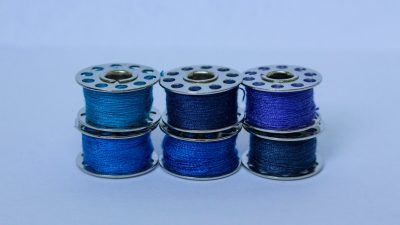

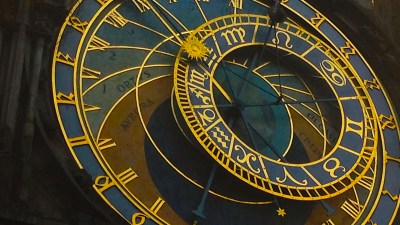
Comments